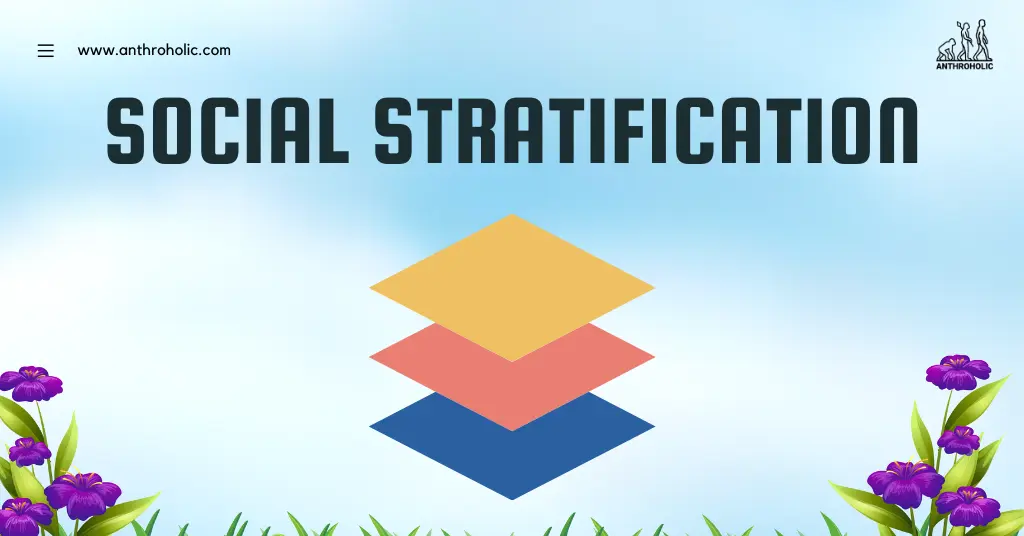AI Answer Evaluation Platform Live Now. Try Free Answer Evaluation Now
Social Stratification
Social stratification is a fundamental concept in the field of sociology, providing a framework to understand the hierarchical divisions in society. It addresses how different social categories, such as class, race, and gender, contribute to social inequality and affect people’s opportunities and life experiences.

Understanding Social Stratification
Social stratification refers to the organization of individuals into social hierarchies based on various factors such as wealth, power, and prestige. These hierarchies are often stable across generations and influence the opportunities available to people within society [1].
Dimensions of Stratification
Three key dimensions define social stratification: class, status, and power.
- Class: It refers to the economic position of an individual or a group in society, primarily defined by income and wealth.
- Status: Status or prestige reflects the respect or admiration that an individual or group commands in society. It could be due to their occupation, education, family lineage, etc.
- Power: Power denotes the ability of an individual or group to achieve their goals despite opposition from others.
Table 1 provides an illustrative categorization using these dimensions.
| Class | Status | Power |
|---|---|---|
| Upper class | High status occupations | Political leaders |
| Middle class | Medium status occupations | Professionals |
| Lower class | Low status occupations | Manual workers |
Table 1: Illustrative Stratification based on Class, Status, and Power
Theories of Social Stratification
Several theoretical perspectives explain why social stratification exists and its impacts on society [2].
Functionalism
Functionalists argue that social stratification is necessary and beneficial for the stability and functioning of society. They believe that different roles in society must be filled by competent individuals who need to be rewarded appropriately for their skills and efforts. This creates a hierarchy of roles that results in stratification [3].
Conflict Theory
Conflict theorists, following Marx, view social stratification as a result of the conflict between different classes. They argue that stratification benefits those in power at the expense of the less powerful, contributing to social inequality.
Symbolic Interactionism
Symbolic interactionists focus on micro-level analysis of stratification, examining how social interactions reflect and reproduce social hierarchies. They’re interested in how social status and class are conveyed through symbols and signs in daily life.
Impact of Social Stratification
The impact of social stratification is far-reaching, affecting various aspects of people’s lives [4].
Economic Opportunities
Economic opportunities, such as access to education and high-paying jobs, are often concentrated among higher classes, while lower classes face greater economic hardships.
Health Disparities
Health disparities across different social strata are a significant concern. Higher socioeconomic status is associated with better health outcomes, while those of lower socioeconomic status often face more health challenges.
Social Mobility
Stratification affects social mobility—the ability of individuals or families to move up or down the social and economic ladder. In societies with high stratification, social mobility is often limited.
Types of Social Stratification
Different societies are organized around different forms of social stratification, including caste, class, and estate systems.
- Caste System: The caste system is a form of social stratification characterized by hereditary transmission of a lifestyle which often includes an occupation, ritual status in a hierarchy, and customary social interaction and exclusion based on cultural notions of purity and pollution [5]. A well-known example is the caste system of India, with the division of society into four major castes: Brahmins, Kshatriyas, Vaishyas, and Shudras.
- Class System: A class system is a social ranking based primarily on economic position. Class systems are fluid, and social mobility is possible through education or economic achievements. Unlike castes, which are hereditary, one can change their social class in their lifetime.
- Estate System: An estate system, also known as feudalism, is a state of society where peasants are obligated to work on land owned by nobility, in return for protection and the right to work on their leased lands. This form of stratification was prevalent in medieval Europe.
Global Perspective on Social Stratification
Social stratification is not only confined to individual societies but exists on a global scale as well [6]. Countries are stratified economically into developed, developing, and underdeveloped categories based on various factors like GDP, literacy rate, and life expectancy.
Table 2 represents the global stratification based on some of these factors.
| Categories | GDP | Literacy Rate | Life Expectancy |
|---|---|---|---|
| Developed countries | High | High | High |
| Developing countries | Medium | Medium | Medium |
| Underdeveloped countries | Low | Low | Low |
Table 2: Global Stratification based on GDP, Literacy Rate, and Life Expectancy
This global stratification has significant implications for disparities in wealth, access to resources, and life chances among nations.
The Future of Social Stratification
In the age of rapid globalization and technological advancement, social stratification is undergoing significant changes. The digital divide is emerging as a new form of social inequality, creating disparities in access to information and communication technologies [7].
Moreover, growing awareness about social inequalities is leading to increased advocacy for social justice. Movements for racial, gender, and economic equality are challenging traditional social hierarchies and advocating for more egalitarian societies.
Despite these promising trends, social stratification is likely to remain a fundamental aspect of social organization due to its deep roots in economic structures, cultural beliefs, and social practices. Hence, continued efforts are needed to understand and address the causes and consequences of social stratification.
Concluding Remarks
Social stratification is a pervasive phenomenon that shapes society in profound ways. Although stratification systems differ across cultures and historical periods, they have a common feature: they rank people, distributing wealth, power, and prestige unequally. This structure has significant implications on individuals’ life chances and societal cohesion. Further research and policy interventions are needed to mitigate the adverse impacts of social stratification and promote social equity.
References
[1] Grusky, D. B. (2014). Social Stratification. Encyclopedia of Social Theory, Routledge.
[2] Andersen, M.L. & Taylor, H.F. (2008). Sociology: Understanding a Diverse Society. Thomson Wadsworth.
[3] Davis, K. & Moore, W.E. (1945). Some Principles of Stratification. American Sociological Review.
[4] Marmot, M. (2005). Social determinants of health inequalities. Lancet.
[5] Dirks, N. B. (2001). Castes of Mind. Princeton University Press.
[6] Grusky, D. B., & Szelényi, S. (2011). The Structure of Social Stratification in the United States. Pearson.
[7] DiMaggio, P., & Hargittai, E. (2001). From the ‘Digital Divide’ to ‘Digital Inequality’. Princeton University Center for Arts and Cultural Policy Studies.




